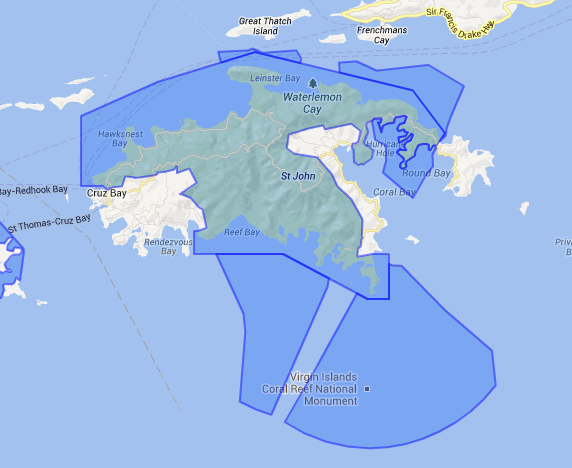WaterPollution: Difference between revisions
From coraldigest
SSchwemlein (talk | contribs) |
SSchwemlein (talk | contribs) |
||
| Line 68: | Line 68: | ||
#Than, Ker. "Swimmers' Sunscreen Killing Off Coral." National Geographic. National Geographic Society, 28 Jan. 2008. Web. 24 Feb. 2014. <http://news.nationalgeographic.com/news/2008/01/080129-sunscreen-coral.html>. | #Than, Ker. "Swimmers' Sunscreen Killing Off Coral." National Geographic. National Geographic Society, 28 Jan. 2008. Web. 24 Feb. 2014. <http://news.nationalgeographic.com/news/2008/01/080129-sunscreen-coral.html>. | ||
#"The Value of Corals." Coral Reef Systems. N.p., n.d. Web. 23 Feb. 2014. <http://coralreefsystems.org/content/value-corals>. | #"The Value of Corals." Coral Reef Systems. N.p., n.d. Web. 23 Feb. 2014. <http://coralreefsystems.org/content/value-corals>. | ||
Revision as of 14:58, 17 March 2014
Water Pollution
Overview
Major sources, major consequences, broad and then focus on problems, then look at policy and possible solutions (real and proposed; including actual cases)
Major Sources of Pollution
Industrial
- chemical release
- urban development
- factory development
Human Waste
- sewage
- litter
Physical/Chemical
- tourism
- sunscreen
- physical damage caused by tourists
- offshore oil production
Environmental Consequences of Pollution in Coral Reef Environments
- loss of biodiversity
- damages to food chains
- loss of habitat
- damage to tourism based economies
Case Study: Focus on St. John
Major Sources of Pollution
- “Sediment from dirt roads, farmland, construction sites, urban encroachments, and other disturbed soils is the primary nonpoint source pollutant threatening the Islands' water resources.” [1]
Impacts
- Buries coral reefs and seagrass beds
- Clouds the water
- Impairs fish feeding and breeding sites
- Impacts recreational activities.
- Destroy natural resources
- Reduce the income and attractiveness of the tourist industry
- Damage the territory's fishing industry [1]
Looking Forward
Current Regulations in St. John
- "The Virgin Islands Department of Planning and Natural Resources and the Islands' Nonpoint Source Committee are successfully using a multifaceted education and outreach approach to address this severe water quality problem. Workshops sponsored by the University of the Virgin Islands-Cooperative Extension Service help regulators, developers, and the general public better perceive the challenge that erosion and sedimentation present." [1][2]
- "The USVI Department of Planning and Natural Resources (DPNR) administers and enforces of all laws pertaining to the preservation and conservation of fish and wildlife, trees and vegetation, coastal zones, cultural and historical resources, water resources, and air, water, and oil pollution. DPNR is also responsible for oversight and compliance of land surveys, land subdivision, development and building permits, code enforcement, earth change permits, zoning administration, boat registration, and mooring and anchoring of vessels in territorial waters. It formulates long-range comprehensive and functional development plans for the territory's human, economic, and physical resources." [3]
- The DPNR also releases evaluation findings for the Virgin Islands Coastal Zone Management Program regularly. [4]
- "The U.S. Virgin Islands is also a member of the U.S. Coral Reef Task Force. As part of the Task Force, the Coastal Program has led a participatory process to develop local action strategies to address four priority threats to coral reefs: land-based sources of pollution, over-fishing, lack of public awareness, and recreational misuse/overuse. The Coastal Program is also the U.S. Virgin Island's primary point-of-contact to the Task Force." [5]
- Local Action Strategies (LAS): "U.S. Coral Reef Task Force led initiative to identify and implement priority actions needed to reduce key threats to valuable coral reef resources in each U.S. coral reef jurisdiction." [6]
- 2 U.S. Marine Protected Areas on St. John: Virgin Island National Park & Virgin Islands Coral Reef National Monument (see map below) [7]
Other Policy/Regulatory Frameworks
- Ecosystem-based Management [8]
- Needs for Multidisciplinary Approach to Coral Reef Conservation [9]
- Marine Protected Areas (MPAs) [10]
- NOAA's Coral Research, Restoration, or Monitoring Expeditions [11]
- Coral Reef Ecosystem Monitoring, Mapping and Assessing [12]
Additional Research/Study
Potential Future Complications
- ecology
- evolution of types of pollution
References
- ↑ 1.0 1.1 1.2 Syedali, S.A. "Nonpoint source success stories: Virgin Islands." US Environmental Protection Agency, 6 March 2012. Web. 25 Feb. 2014. <http://water.epa.gov/polwaste/nps/success319/virgin.cfm
- ↑ "Virgin Islands Coastal Nonpoint Program NOAA/EPA Decisions on Conditions of Approval." NOAA. Feb. 2002. <http://coastalmanagement.noaa.gov/nonpoint/docs/6217vi_fnl.pdf>
- ↑ "Task Force Members." United States Coral Reef Task Force. June 2011. Web. 25 Feb. 2014. http://www.coralreef.gov/about/members.html
- ↑ "Virgin Islands Coastal Zone Management Program." NOAA Office of Ocean and Coastal Resource Management. Jan 2009. <http://coastalmanagement.noaa.gov/mystate/docs/virginislandscmp2009.pdf>.
- ↑ "Ocean and Coastal Management in the U.S. Virgin Islands." NOAA Office of Ocean and Coastal Resource Management. 19 Feb 2014. Web. 25 Feb 2014. <http://coastalmanagement.noaa.gov/mystate/virgin_islands.html>.
- ↑ "Local Action Strategies." United states Coral Reef Task Force. May 2009. Web. 25 Feb. 2014. <http://www.coralreef.gov/las/
- ↑ "U.S. Marine Protected Areas." Web. 25 Feb. 2014. <http://marineprotectedareas.noaa.gov/dataanalysis/mpainventory/mpaviewer/
- ↑ NOAA. "NOAA's Coral Reef Conservation Program." June 17, 2011 Web. 23 Feb 2013. http://coralreef.noaa.gov/conservation/methods/#manaagement
- ↑ NOAA. "NOAA's Coral Reef Conservation Program." June 17, 2011 Web. 23 Feb 2013. http://coralreef.noaa.gov/conservation/methods/#multidis
- ↑ NOAA. "NOAA's Coral Reef Conservation Program." June 17, 2011 Web. 23 Feb 2013. http://coralreef.noaa.gov/conservation/methods/#mpa
- ↑ NOAA. "NOAA's Coral Reef Conservation Program." June 17, 2011 Web. 23 Feb 2013. http://coralreef.noaa.gov/conservation/methods/#expeditions
- ↑ NOAA. "NOAA's Coral Reef Conservation Program." June 17, 2011 Web. 23 Feb 2013. http://coralreef.noaa.gov/conservation/methods/#assessing
- "An Overview of Land Based Sources of Marine Pollution." UNEP-Caribbean Environment Programme_Land Based Sources of Marine Pollution. CAR/RCU, 21 Aug. 2001. Web. 24 Feb. 2014. <http://www.cep.unep.org/issues/lbsp.html>.
- "Coral Damage." Right Tourism Campaign Care for the Wild International Coral Damage Comments. N.p., 2012. Web. 24 Feb. 2014. <http://right-tourism.com/issues/marine-activities/coral-damage/>.
- Harder, Ben. "Raw Human Waste Killing Off Coral Reefs?" National Geographic. National Geographic Society, 27 June 2002. Web. 24 Feb. 2014. <http://news.nationalgeographic.com/news/2002/06/0627_020627_coral.html>.
- "Status of and Threat to Coral Reefs." International Coral Reef Initiative. N.p., n.d. Web. 24 Feb. 2014. <http://www.icriforum.org/about-coral-reefs/status-and-threat-coral-reefs>.
- Shah, Anup. "Coral Reefs." Global Issues. N.p., 3 Mar. 2013. Web. 23 Feb. 2014. <http://www.globalissues.org/article/173/coral-reefs>.
- Than, Ker. "Swimmers' Sunscreen Killing Off Coral." National Geographic. National Geographic Society, 28 Jan. 2008. Web. 24 Feb. 2014. <http://news.nationalgeographic.com/news/2008/01/080129-sunscreen-coral.html>.
- "The Value of Corals." Coral Reef Systems. N.p., n.d. Web. 23 Feb. 2014. <http://coralreefsystems.org/content/value-corals>.
